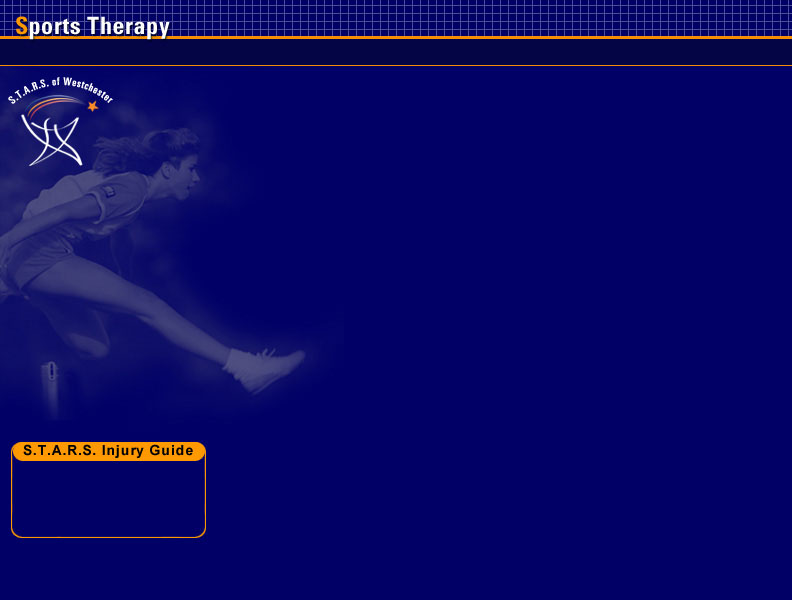|
Select
an item from the pulldown menu for a list of sports-related injuries
Home | Rehabilitation | Sports
Therapy | Adolescent
Therapy | Lymphedema
Therapy | ATM2 | Staff | Facility | Patient
Forms | Testimonials | Contact
Us | Golf
|
| 311 North Street | White Plains,
NY 10605 | Tel. 914.428.2033 | 914.493.8375 | Fax. 914.428.2055 |
 Gymnastics/Ballet
Injuries Gymnastics/Ballet
InjuriesBallet Dancing is a sport, like any sport there is a risk of injury. It is physically quite gruelling, with a level of precision required comparable to that of an Olympic gymnast. Improper training techniques, long-term wear-and-tear of musculoskeletal structures, biological and environmental factors (especially dancing on hard-floors) can lead to overuse injuries, strain, or more sever trauma. Lateral ankle is the most vulnerable to sprain due to heavy weight transfers that occur during ballet dancing. Dancer’s may experience knee pain from patellofemoral syndrome (PFS) or chronic knee pain, often called Housemaid’s knee. PFS is aggravated by activity or prolonged sitting with bent knees. Hip and back problems are also prevalent in dancers. Dancer’s Heel, compression of the soft-tissue at the back of the ankle, a bony formation bump behind the ankle causes compression. Dancer feels discomfort when en pointe. Physical therapy, rest and ice are prescribed. Gymnastics has some specific overuse, hyper-extended injuries such as Spondylolysis. This condition may cause back spasms, stiffen posture, change gait, and tighten hamstring muscles—all dangerous for these types of athletes that need to remain loose and limber. This condition results from stress fracture in the lower back vertebrae, with damaged vertebrae slipping forward and pressing on the spinal canal and nerves. Other injuries include ankle and knee problems from landings and dismounts. Wrists also bear a tremendous amount of weight from walkovers, handspring and other fast, jolting movements, leading to conditions such as dorsal wrist impingement—or distal radial stress fractures. Treatments can vary depending on severity. Common Dance/Gymnastics Iinjuries—Shin Splints • Heel Spur Syndrome • Posterior Impingement Syndrome (Dancer’s Heel) • Patellofemoral Syndrome (PFS) • Spondelolysis • Dorsal Wrist Impingement Susceptible Injury Areas—Wrist • Neck • Knee • Lower Leg • Foot/Ankle • Shoulder • Lower Back |
